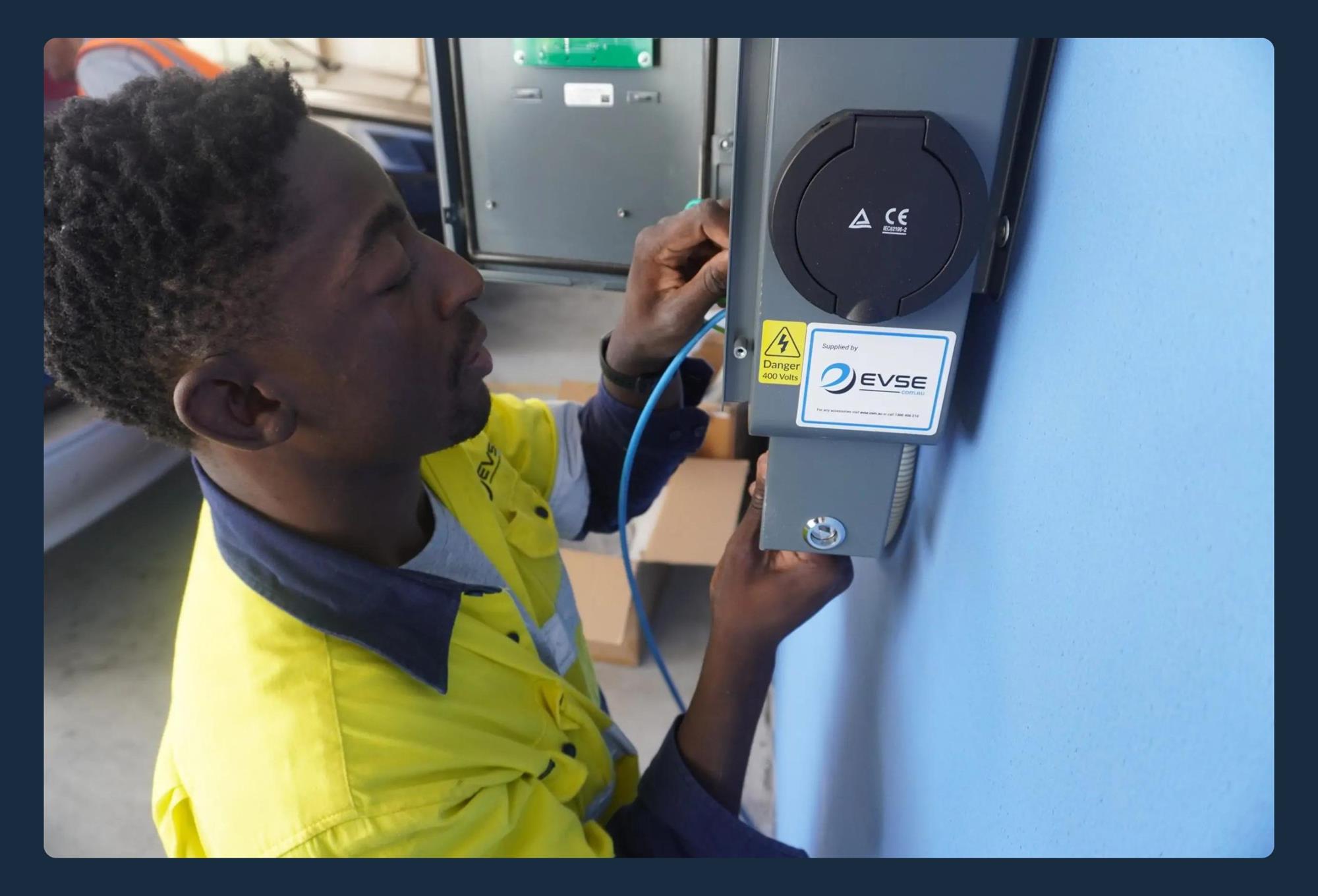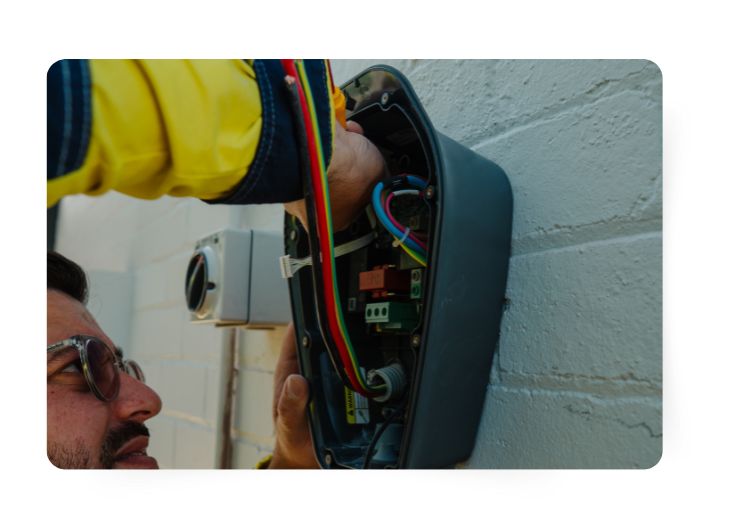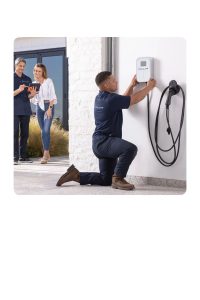Find the right charger
Tell us about your car and home to see recommendations.

It is so simple with our dedicated residential team.
Step 1: Get a quote
Step 2: One of our representatives will have a quick chat to understand your requirements better.
Step 3: We’ll send you a convenient SMS form to gather essential details
Step 4: Our team will finalise your quote within 2-3 business days.
Step 5: Once you’re happy with the quote, we’ll schedule one of our trusted installation partners to set up your charger within just 2 weeks. And that’s it! It’s as simple as that. Get ready to embrace the convenience of charging your EV at home. Happy charging! 🌟
EVSE has an Australia-wide network of certified electricians who are experienced in installing EV chargers in businesses and homes. Whether you’ve just purchased a new electric car or plan on purchasing one soon, here are a few helpful tips to prepare for your new EV home or office charging station.
When installing a charging station for your electric car, consideration must be given to various safety criteria. Our checklist includes all the key points you need to remember when installing your charging station. The information provided on this website is a guide, all installations should be conducted according to the manufacturer’s recommendation and the various state & territory regulations across Australia. All EV equipment should be installed by a licensed and qualified electrician.

A licensed and certified electrician will need to install your new EV charger. EVSE Australia does have a network of trusted installers, but conversely, you may opt to use your own electrician. Before they come for a site assessment and installation, determine where you intend to park your EV while it’s charging. Ideally, you want the charging station to be no more than 3m from the connection port on your car. In terms of charging a vehicle in the future, we are seeing newer generation EVs coming out with faster onboard capacity utilizing the more powerful 3 phase connections. If the building has access to 3 phase power then we would highly recommend that this is made available to your home with an outlet in your garage. If not, then choose a single-phase connection with a capacity of 32Amp to give you a power available of 7.4kW. Your installer will determine what your home has and if any updates are needed.
Our EV chargers come with configurable outputs so they will work on both single and 3-phase connections.
Please place the outlet close to the garage door or area where you intend to charge the car to give you flexibility so that the cable can charge the car when it’s parked inside or outside and remember to give space for the charger to be mounted on the wall.

EVSE has been committed to providing top-quality products and solutions for every customer and project since 2015.
As industry leaders, we pride ourselves on our unwavering focus on safety, quality, and reliability—earning the trust of our customers and partners alike.
We understand that every project is unique, which is why our approach is always tailored to deliver the perfect solution, every time.

Your electrician can provide an on-site quote and can begin installing your EV charger at your Home or Office. Regardless of who you choose to install your EV Charger in Australia, make sure they are a licensed electrician and provide you with a quote before beginning any work. Please remember cable length will determine how flexible your parking options are. Conversely, the cable becomes heavier. Generally 3kg for 5m cable & 6kg for 10 m cable
What does this include?
Customer is contacted within 24 hours of enquiry by EVSE to book installation.
Install your EV Charger using our low fixed price installation package. Backed by our quality guarantee.
Up to 15 metre run from the electricity meter & home EV charger.
Industry leading 2-year replacement warranty.
EVSE believes in a green sustainable future by delivering the latest EV Charging technology at the lowest price. All our work is certified and guaranteed with the backing of global brands.
Our team of experts can provide specialist EVSE advice and are available to answer any of your questions over the phone






Tell us about your car and home to see recommendations.

Stocking the best Electric Car products from the World’s leading brands.

All of our EVSE products are compliant with Australian & International standards.